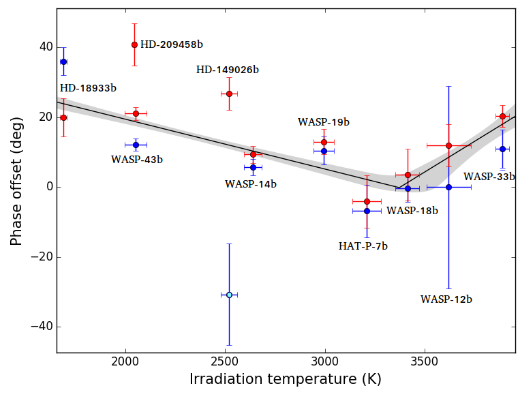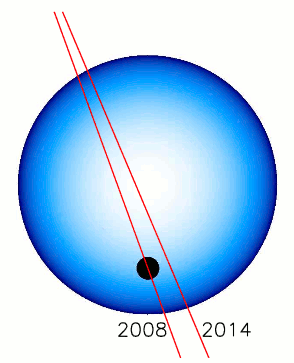Here’s a plot from a new paper by David Cont et al, of the University of Göttingen. The plot shows spectra of the WASP-33 system, obtained with the CARMENES near-infra-red spectrograph on the 3.5-m telescope at the Calar Alto Observatory.

The image shows features caused by iron absorption lines, as a function of time (y-axis). The spectra have all been adjusted so that zero velocity (RV) is centred on the host star, WASP-33. The star’s rotation then causes features over the spread of velocities marked by the dashed yellow lines.
One can clearly see the rippling effect of pulsations as they run around the star. The pulsations are likely being excited by the tidal pull of the planet.
In addition, though, and marked by yellow arrows, is a faint diagonal line. This is caused by the planet, WASP-33b, and is the effect of iron absorption lines in the planet’s atmosphere. It moves diagonally across the image owing to the orbital motion of the planet around the star.
By comparing their analysis of iron lines to a similar analysis for Titanium Oxide, the authors show that there is a temperature inversion (higher temperature at greater height) in the atmosphere of the planet.







